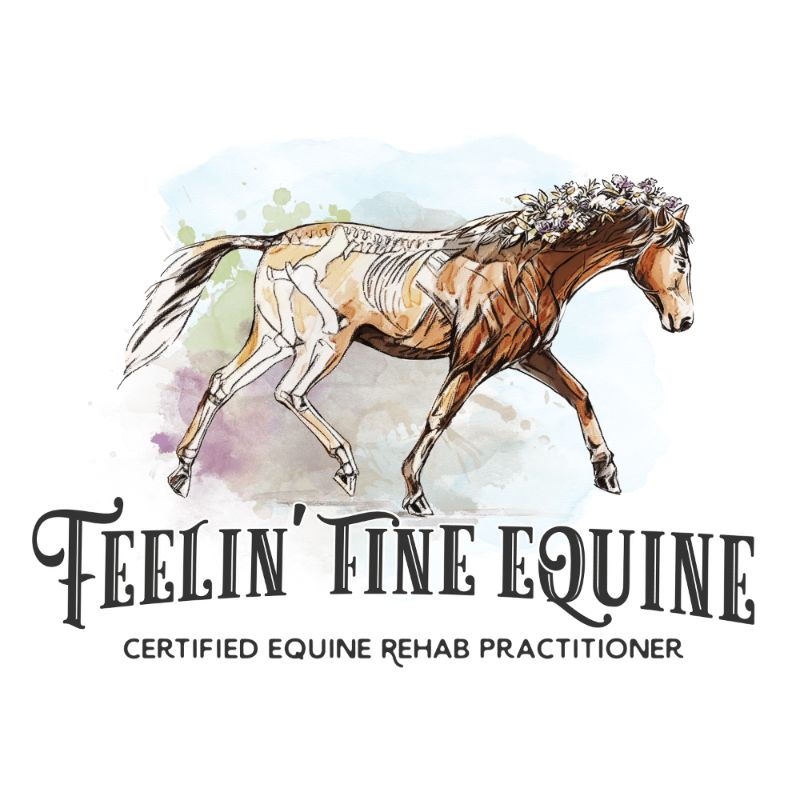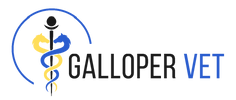
Feelin' Fine Equine: Healing, Prevention, and Better Movement
A conversation with the expert, Morgan Stephens, CERP.
Morgan has dedicated her life to animal care and equine health. Her journey began at just

15 years old, working in a veterinary clinic and later becoming a Veterinary Technician, where she gained invaluable hands-on experience. Around that same time, she welcomed her first horse—whose medical challenges sparked Morgan’s lifelong passion for equine rehabilitation.
After six years as a Vet Tech, Morgan pursued her calling and became a Certified Equine Rehabilitation Practitioner through the University of Tennessee. Since then, she has continued to expand her expertise through advanced courses and clinics, specializing in long-term rehabilitation and lameness cases. With a focus on posture and movement patterns, her mission is to help horses return to moving as nature intended.
Today, Morgan shares her knowledge through online classes designed to empower horse owners to better support their horses’ health. When she’s not working with horses, she enjoys life on her family farm with her husband, their young son, and a daughter on the way.
Here is our conversation with her:
What inspired you to become a Certified Equine Rehabilitation Practitioner?
I’ve always believed that every horse deserves the chance to feel and move their best. That belief became deeply personal when two of my own horses developed serious physical issues. Despite countless vet visits and consultations, no one could offer a lasting solution—both were even recommended to be put down. Refusing to give up, I dove into research and discovered a whole new approach to horsemanship that focused on root cause issues rather than quick fixes. Through proper movement, a supportive diet, and good hoof care, my horses didn’t just recover—they began to thrive and move better than ever before.That experience completely changed the way I work with horses. Becoming a Certified Equine Rehabilitation Practitioner gave me the skills to help others create the same transformations—addressing root causes so horses can recover, rebuild, and live the healthy, happy lives they deserve.
What injuries or conditions do you commonly treat in horses?
I work with a wide range of cases, from:

- Soft tissue injuries like tendon and ligament strains
- Back and neck pain
- Post-surgical recovery
- Neurological weakness
- Poor topline
- Chronic soreness
- Subtle lameness
- Movement issues that have gone unresolved for years.
Can equine rehab prevent future injuries—or is it only for recovery?
Rehab is just as powerful for prevention as it is for recovery. By improving strength, balance, and proper movement patterns, we can greatly reduce the risk of future injuries. Think of it as building a more resilient horse from the inside out.
What’s the average timeline for a rehab program?
Every horse is different, but most structured rehab programs run anywhere from 8 to 16 weeks. That said, the timeline depends on the severity of the injury, the horse’s starting condition, and how consistently the program is followed.
How important is exercise and movement in equine rehab?
Movement is the foundation of recovery. The right type of exercise stimulates circulation, strengthens muscles, supports joint health, and helps the nervous system re-learn proper patterns. Rehab isn’t just about rest—it’s about teaching the body to move correctly again.
What is cold laser therapy for horses?
Cold laser therapy uses specific wavelengths of light to stimulate the body’s natural healing processes at a cellular level. It increases circulation, reduces inflammation, and promotes tissue repair—all without causing heat or discomfort.
What types of injuries or conditions respond best to cold laser treatment?
Cold laser is particularly effective for soft tissue injuries, joint inflammation, arthritis, nerve damage, back pain, wound healing, and post-surgical recovery. It can also help chronic conditions by improving comfort and mobility.
How soon do you typically see results after starting laser therapy?
Some horses show noticeable improvement after just one or two sessions, especially with pain relief and mobility. For deeper or chronic issues, the benefits are cumulative and build over multiple treatments.
Why did you choose to integrate cold laser therapy into your rehab practice?
It’s a safe, non-invasive, and highly effective tool that complements movement-based rehab. By reducing pain and inflammation it allows horses to move more comfortably, which makes the rest of the rehab process more successful.
Are there any risks or side effects of using a cold laser on horses?
Cold laser is extremely safe when used correctly. The main precaution is avoiding direct use over the eyes, cancerous growths, or certain areas in pregnant mares.
What does a typical laser therapy session look like for the horse?
The horse is kept calm and comfortable, often standing in their stall or a quiet area. The laser is applied directly to the skin over the targeted area, with the beam held in place for a set amount of time per point. Most horses find the process relaxing.
How many sessions does a horse usually need to experience noticeable improvement?
Acute injuries may respond in 3–6 sessions, while chronic conditions often require 8–12 or more. The frequency and number of treatments depend on the condition and the horse’s individual response.
What should owners look for to know if laser therapy is working?
Owners may notice their horse moving more freely, showing less stiffness, improving in performance, or having a better overall attitude. Even small changes—like easier transitions, better posture, or more willingness to move—are signs the therapy is making a difference.
About your personal life. How do you manage your work with horses while pregnant and with a toddler?
Working with hotses while pregnant and a toddler is definitely a balancing act. Safety always comes first, so I adjust what I do depending on how I'm feeling that day and where my body is at. Some days it means more groundwork or gentle sessions instead of riding and heavy lifting exercises. I've also learned to let go of the idea that I have "to do it all." Having a toddler has taught me to break things into smaller moments instead of big training sessions. Horses are incredibly responsive to energy, so they actually benefit from the slower, more intentional pace. My toddler is growing up seeing horses as part of everyday life, which makes what I do even more special. Most days my toddler is with me, however, I just recently integrated a babysitter twice a week for a couple of hours, which has allowed me to get in more intentional work and be a better mom. No matter your situation, life can be busy, but working with horses doesn't have to be tedious!
Last but not least:

We would like to show you some of Morgan’s work. In this picture, you can see the before and after of Goldie, a 14-year-old mare who tore her DDFT four years ago. Over the past 12 weeks, Morgan has been rehabbing Goldie’s body, preparing her to finally be ridden again. The transformation is remarkable.
When Morgan first got Goldie, her focus was on healing the tendon through herbal remedies, nutrition, and therapeutic modalities such as vibration plate therapy, cold laser, and ultrasound. Within six months, the tendon had healed—but Goldie was still uncomfortable and unsound. It wasn’t until Morgan shifted her focus to posture and movement patterns that the real breakthrough happened. She discovered the true issue wasn’t just the tendon—it was the way Goldie used her body over time that had led to the injury in the first place.
Goldie has been one of Morgan’s longest and most meaningful rehab cases, teaching her invaluable lessons about the equine body. With guidance from her mentor, Morgan has been able to implement better horsemanship and create lasting changes. The difference in Goldie’s body, attitude, and movement speaks volumes—and while her journey isn’t over, her progress is a powerful reminder that true rehab is a lifestyle, not a quick fix.
For more information about Morgan's work, visit her website or follow her Instagram page.

